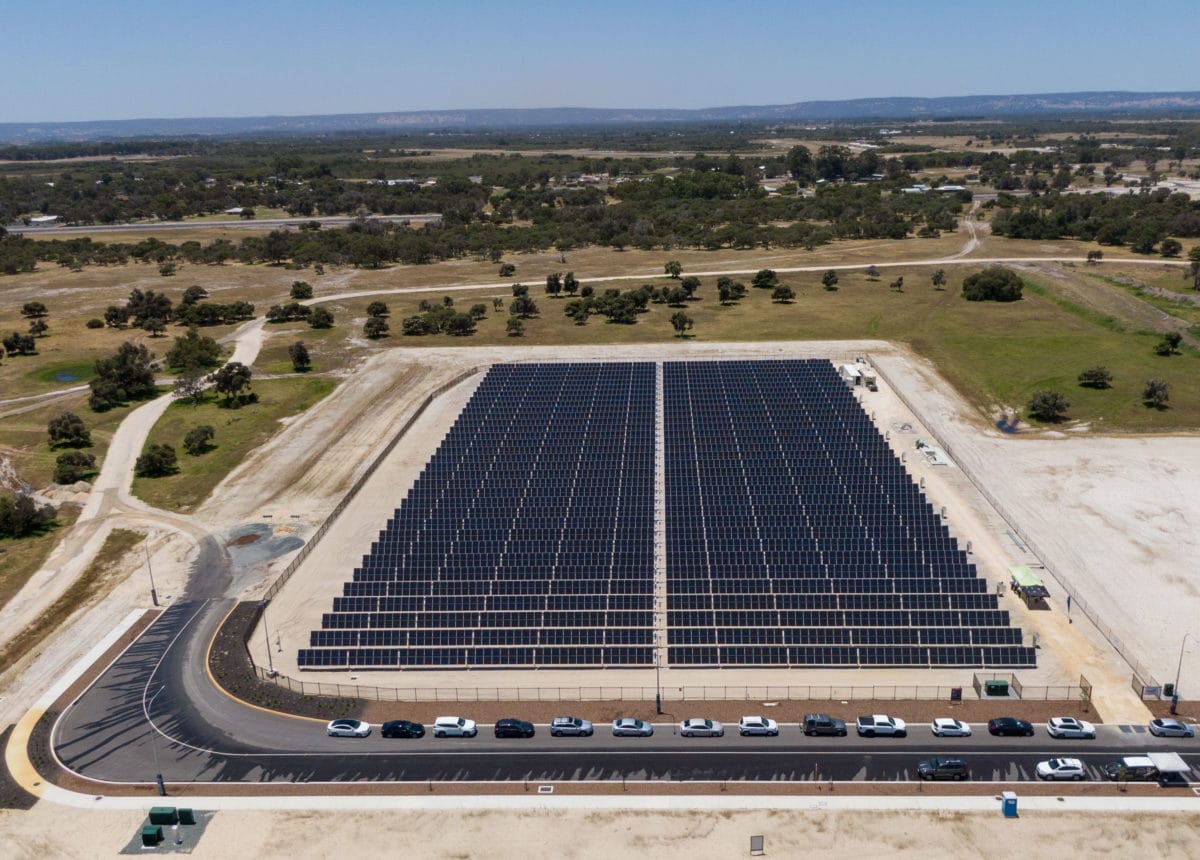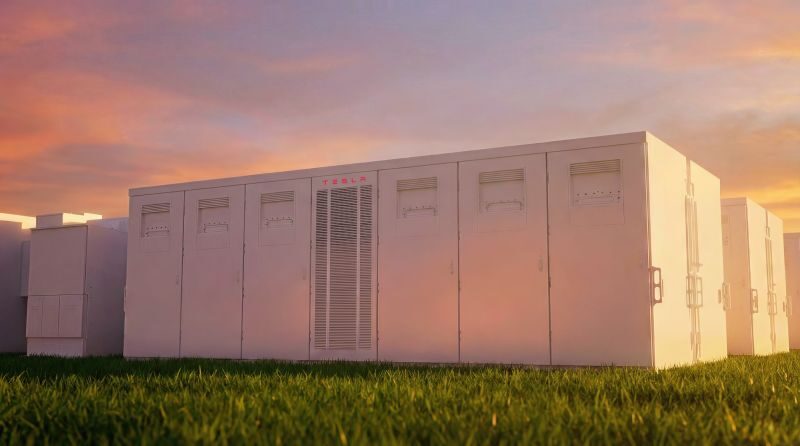In what is likely a world first, Peel Renewable Energy has developed a flexible solar-powered microgrid solution to the high cost of delivering mains power to new industrial estates. The first stage of the company’s demonstration project at the Peel Business Park, a 1,000-hectare site in semi-rural Nambeelup, near Mandurah in Western Australia, was energised in August 2020 with a grid connection from the South West Interconnected System (SWIS). Full integration of the microgrid’s 1.2 MW ground-mounted solar generation (installed) and 2.5 MWh battery storage system is expected to be completed in early 2021.
Peel Renewable Energy is a subsidiary of Tasmanian gas distributor and energy retailer, Tas Gas, and was previously part of the Enwave Australia group that developed the Tonsley District Energy Scheme in Adelaide, South Australia.
Rob Breden, General Manager for Peel Renewable Energy in Western Australia, told pv magazine, that the traditional approach to developing industrial estates has been to build multimillion-dollar lead-in grid electricity infrastructure, the full capacity of which might not be utilised for many years, until lots are sold or tenanted and businesses build their facilities and ramp up operations.
“A microgrid approach allows for a more staged and fit-for-purpose deployment of services infrastructure to match the particular objectives of developers,” says Breden.
Stimulating regional development while keeping costs to a minimum
DevelopmentWA, the land development agency of the Western Australian Government, wanted to bring the skilled workforce of the area, which has become the gateway to the Peel agricultural region, together with innovative new or relocated businesses, and sought a cost-effective approach to delivering energy to its new estate.
“As part of Transform Peel, and as an innovative industry hub in its own right, Peel Business Park will play a crucial role in supporting economic and employment growth and building resilience within the Peel region for generations to come,” said WA Regional Development Minister Alannah MacTiernan in December 2020 when she announced the opening of the first 16 hectares of the site.
Stage 1 of the Peel Business Park is expected to generate 250 ongoing jobs and contribute $73 million to the local economy, as it becomes home to the Shire of Murray’s Western Australian Food Innovation Precinct, a variety of local businesses, and the Department of Fire and Emergency Services’ new Bushfire Centre of Excellence which will open on 25 January.
Required, but not limited to, 50% renewable generation
The estate’s 2.5 MWh battery storage system, scheduled to be commissioned in March, will complete the core of the reliable electricity system that is contracted to deliver a minimum of 50% of its output to the Peel Business Park from renewable sources.
As demand from onsite businesses grows, Peel Renewable Energy will lease rooftop space from occupants, to sustainably and “sensibly” grow electricity supply, says Breden, adding battery storage as needed, and providing energy at a mandated 30% discount on Western Australia’s published state-regulated tariffs.
As part of its business Peel Renewable Energy has obtained licenses for both distribution and retailing of electricity in the Peel Business Park estate.
“It’s taken a little more than two years,” says Breden “and has involved extensive stakeholder engagement by a great team of people, including technical, legal and compliance experts.”
Peel Renewable Energy is not limited to a 50% supply of renewables says Breden, “It can be more; the good thing is that this is a scalable and flexible model.”
Primed to integrate cost-effective new renewable-energy technologies
For example, if in five years time, due to technology, pricing or load profile, it makes sense to provide renewable energy from a source other than rooftop solar, Peel Renewable Energy is in a position to deliver the most efficient generation available.
“Where you locate those assets is all about what makes commercial sense at any point in the future — it may be that we put in another ground-mounted solar farm by renting an additional lot in the estate.”
In the meantime, energy customers are guaranteed grid-quality, low-cost, 50% renewable electricity supply that will grow to suit their needs, without having to finance, install and manage their own rooftop generation.
“All electrcity distribution and generation assets in the microgrid will be owned and operated by Peel Renewable Energy,” says Breden.
Unsurprisingly, Breden reports that delivery of the concept has captured the interest of a number of other developers keen to reduce the cost of grid connection, and entice tenants with the availability of low-cost renewable energy.
This content is protected by copyright and may not be reused. If you want to cooperate with us and would like to reuse some of our content, please contact: editors@pv-magazine.com.




We are involved in developing 180 megawatt system on around 900 acres of land connected to a grid and it is at capped at max. Want to explore if land requirements are less if you have a compact design which delivers the same efficiency.
Is there anything you need in your design compared to the standard land-based system? Can you send me details or highlights of your system to see if it would make any sense to locate bat in the city environment where land is is expensive. What type of a company are you?
Hi Ash, any queries on the microgrid project, its operations, or the implications for occupants should be directed to Brenton Pham via email at Brenton.Pham@developmentwa.com.au